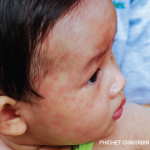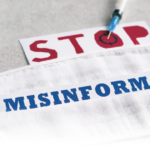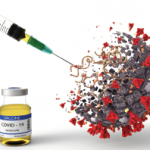Other studies noted that atopic dermatitis seemed to temporarily recede in some patients who’d had measles. A few isolated reports of temporary remission of autoimmune conditions, such as juvenile rheumatoid arthritis and idiopathic nephrotic syndrome, also occur in the literature, consistent with this immunosuppressive effect.3-5 However, in the past several years, researchers further quantified this effect and began to get a better sense of its scope, using the term immune amnesia to refer to the phenomenon.6,7
“Measles infects lymphocytes widely, particularly memory B cells and T cells,” explains Dr. Moss. “This leads to destruction of the memory immune response and, thus, [to] a loss of immunologic memory.” Among other effects, measles reduces the antibody diversity of, and antibody quantity in responding to, previously encountered pathogens.
At the population level, recent analyses of historical data have shown the impact of measles goes far beyond deaths from initial infection due to increased infectious disease deaths from other causes over the next few years. In the past, measles may have been associated with as many as 50% of all infectious disease deaths during childhood.6,7
Dr. Moss notes this impact is most profound in children in parts of the world at risk of undernourishment and vitamin A insufficiency, which multiply infectious disease risks. Worldwide, measles still leads to between 100,000 and 200,000 deaths each year, mostly in children in under-resourced areas.2
Vaccination & Recent Outbreaks
Most RNA viruses have high mutation rates, such as the influenza virus. Fortuitously, the epitope region of the measles virus, which is most important for inducing immunity, is found near the virus’ receptor binding site. Because of this, new mutations in this region are non-pathogenic. This antigenic stability has meant that live measles virus vaccines, first developed from a strain in the 1950s, still provide protection against currently circulating strains.2
In 1963, the U.S. Food & Drug Administration approved two different vaccines against measles—a live vaccine produced by Merck and an inactivated-type vaccine produced by Pfizer. From 1963 to 1967, less than 5% of children received the latter, which was ultimately found to be less effective than the live virus vaccine. An improved version of the live vaccine was released in 1968; it is still the foundation of modern measles vaccination, usually packaged with vaccinations for mumps and rubella (MMR).8
In response to measles outbreaks in school-aged children in 1989, the Advisory Committee on Immunization Practices (ACIP) and the American Academy of Pediatrics began recommending a second, live MMR vaccine dose for all children, which reduced measles outbreaks even further.9



